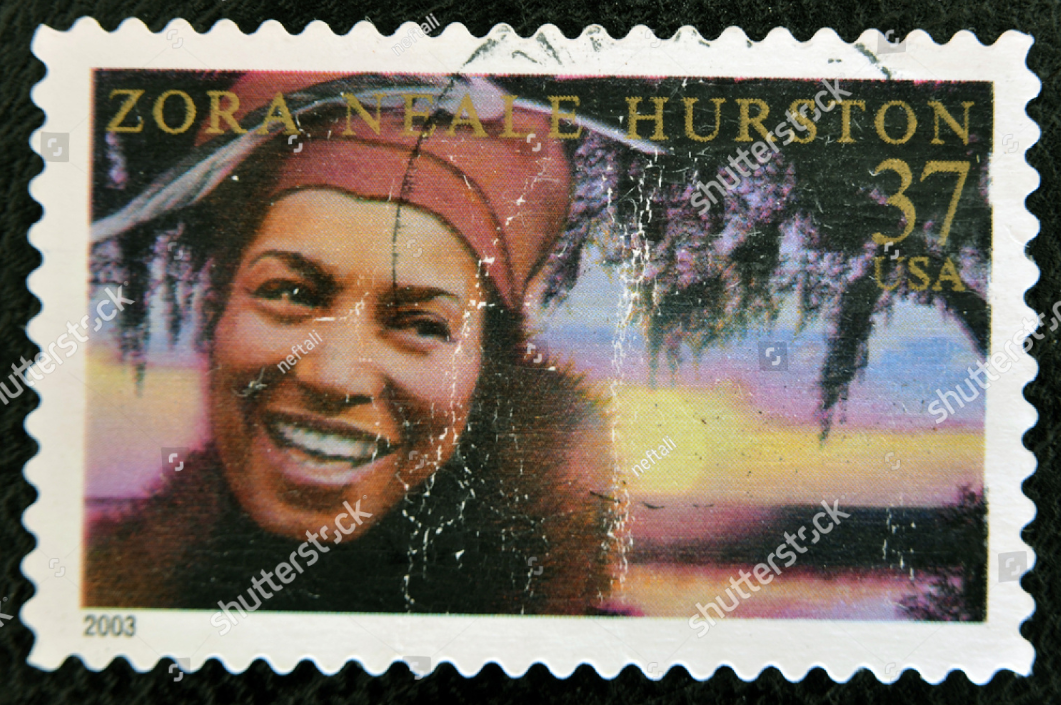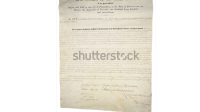The Harlem Renaissance was a pivotal cultural movement that unfolded in the 1920s, marking a period of remarkable artistic, social, and intellectual flourishing in Harlem, New York. This movement, celebrated for its profound influence on American art, literature, and music, represented a renaissance in African American culture, bringing Black identity and creativity into the national spotlight. This comprehensive guide delves into the origins, key figures, themes, and lasting legacy of the Harlem Renaissance, providing a detailed exploration of its significance and enduring impact.
Read Also : The Great Mississippi Flood of 1927: A Catastrophic Event and Its Legacy
Introduction to the Harlem Renaissance
The Harlem Renaissance was not merely a cultural trend; it was a transformative era that redefined African American life and creative expression. Emerging during a time of social upheaval and change, this period was characterized by a vibrant explosion of artistic, literary, and intellectual activity centered in Harlem, a neighborhood in New York City.
Origins and Historical Context
To fully appreciate the Harlem Renaissance, it’s essential to understand the historical and social context that gave rise to this movement. The Great Migration, which saw millions of African Americans leave the rural South for urban centers in the North, played a crucial role in shaping Harlem’s cultural landscape. This migration created a densely populated Black community in Harlem, providing a fertile ground for the flourishing of new ideas and artistic endeavors.
In the early 20th century, Harlem became a cultural epicenter, a magnet for talented African American artists, writers, and intellectuals seeking to express their experiences and challenge prevailing racial stereotypes. The end of World War I and the decline of the Progressive Era created an atmosphere ripe for cultural experimentation and self-expression.
Major Themes of the Harlem Renaissance
The Harlem Renaissance was defined by several key themes that continue to resonate in discussions about African American culture and identity.
- Racial Pride: One of the most significant aspects of the Harlem Renaissance was its emphasis on racial pride. The movement sought to assert the value and dignity of African American culture and challenge derogatory stereotypes. This newfound pride was reflected in the art, literature, and music of the era, celebrating the richness and diversity of Black experiences.
- Cultural Identity: The exploration of cultural identity was another central theme. Artists and writers drew on African heritage and the unique experiences of African Americans to create works that highlighted the richness of Black culture. This included a revival of African traditions and an emphasis on the historical and cultural contributions of African Americans.
- Social Justice: The Harlem Renaissance also addressed issues of racial inequality and social justice. Many creators used their work to critique societal injustices and advocate for change. This focus on social justice was intertwined with the celebration of African American culture, reflecting a desire for both cultural affirmation and societal reform.
The Influence of the Harlem Renaissance on American Art and Literature
The Harlem Renaissance had a profound and lasting impact on American art and literature, shaping these fields in ways that continue to be influential today.
Literary Achievements and Innovations
During the Harlem Renaissance, literature experienced significant innovation and transformation. Writers experimented with new forms, themes, and styles, reflecting the dynamic nature of the period.
- Langston Hughes: As one of the most prominent figures of the Harlem Renaissance, Langston Hughes’s contributions to literature were substantial. His poetry, such as “The Weary Blues” and “The Negro Speaks of Rivers,” utilized jazz rhythms and vernacular language to convey the experiences and aspirations of African Americans. Hughes’s work often addressed themes of racial pride, social justice, and the complexities of African American identity. His essays, including “The Big Sea” and “I Wonder as I Wander,” provided valuable insights into his experiences and views as a writer and intellectual.
- Zora Neale Hurston: Zora Neale Hurston’s work was instrumental in documenting and celebrating African American folklore and cultural traditions. Her novel “Their Eyes Were Watching God” is considered a seminal work in American literature, offering a nuanced exploration of Black womanhood and personal identity. Hurston’s use of dialect and focus on individual narratives provided a fresh perspective on African American life, emphasizing the richness of Black storytelling and culture.
- Claude McKay: Claude McKay’s contributions to the Harlem Renaissance were marked by his exploration of racial oppression and resistance. His poetry collection “Harlem Shadows” reflected the struggles and aspirations of African Americans, combining traditional poetic forms with modernist sensibilities. McKay’s work addressed themes of racial injustice and resilience, influencing the literary landscape of the Harlem Renaissance and beyond.
Artistic Expression and Major Figures
The visual arts during the Harlem Renaissance were characterized by a focus on celebrating African American culture and challenging traditional artistic norms.
- Aaron Douglas: Aaron Douglas was a leading artist of the Harlem Renaissance, known for his distinctive style that incorporated bold colors, geometric shapes, and African motifs. His murals and paintings, such as “Aspects of Negro Life,” celebrated the African American experience and contributed to the movement’s visual identity. Douglas’s work was instrumental in defining the aesthetic of the Harlem Renaissance and highlighting the contributions of Black artists.
- Archibald Motley: Archibald Motley’s vibrant paintings captured the dynamic social scene of Harlem. His work, including “Blues” and “The Octoroon Girl,” portrayed the energy and vibrancy of the Harlem Renaissance, showcasing the cultural richness and diversity of the era. Motley’s art played a significant role in bringing African American art to a broader audience and highlighting the importance of Black creativity in American art history.
Key Figures of the Harlem Renaissance and Their Works
The Harlem Renaissance was marked by the contributions of a diverse group of influential figures whose work had a lasting impact on American culture.
Langston Hughes: The Voice of the Harlem Renaissance
Langston Hughes was a central figure in the Harlem Renaissance, and his work had a profound impact on American literature. His poetry, essays, and short stories captured the essence of African American life and culture. Hughes’s ability to blend jazz rhythms with poetic form created a unique and dynamic literary style that resonated with readers. His work often explored themes of racial pride, social justice, and the complexities of Black identity, making him a pivotal figure in the movement.
Zora Neale Hurston: Exploring African American Folklore
Zora Neale Hurston’s contributions to the Harlem Renaissance extended beyond her novels. Her work documented African American folklore and cultural traditions, providing valuable insights into Black life and culture. “Their Eyes Were Watching God” is a landmark novel that offers a profound exploration of Black womanhood and personal identity. Hurston’s focus on individual narratives and cultural heritage contributed to the richness of Harlem Renaissance literature and left a lasting legacy in American literature.
Duke Ellington and Louis Armstrong: The Jazz Revolution
Jazz music played a crucial role in the Harlem Renaissance, with influential musicians like Duke Ellington and Louis Armstrong revolutionizing the genre.
- Duke Ellington: Duke Ellington’s impact on jazz during the Harlem Renaissance was significant. His innovative compositions and arrangements, including pieces like “Mood Indigo” and “It Don’t Mean a Thing (If It Ain’t Got That Swing),” helped define the sound of jazz. Ellington’s leadership of the Duke Ellington Orchestra and his contributions to jazz as a bandleader were instrumental in shaping the genre and elevating its status.
- Louis Armstrong: Louis Armstrong’s influence on jazz was profound, with his virtuoso trumpet playing and distinctive vocal style setting new standards for the genre. His recordings with the Hot Five and Hot Seven showcased his technical skill and ability to convey emotion through music. Armstrong’s innovations in improvisation and interpretation reshaped the way jazz was played and perceived, making him a central figure in the genre’s development.
Development of Jazz Music During the Harlem Renaissance
Jazz music emerged as a dominant genre during the Harlem Renaissance, serving as both a reflection of the era’s cultural vibrancy and a catalyst for its ongoing evolution.
Evolution of Jazz and Its Key Figures
Jazz music during the Harlem Renaissance was characterized by its improvisational nature and complex rhythms. Key figures such as Duke Ellington and Louis Armstrong were instrumental in the development and popularization of jazz during this period.
- Duke Ellington: Ellington’s career during the Harlem Renaissance was marked by his innovative approach to composition and performance. His arrangements incorporated elements of blues, gospel, and classical music, creating a sophisticated sound that appealed to a wide audience. Ellington’s contributions to jazz extended beyond his compositions; his leadership of the Duke Ellington Orchestra helped shape the direction of jazz during this period and established him as a leading figure in the genre.
- Louis Armstrong: Armstrong’s impact on jazz was significant, with his virtuoso trumpet playing and distinctive vocal style setting new standards for the genre. His recordings with the Hot Five and Hot Seven were groundbreaking, showcasing his technical skill and ability to convey emotion through music. Armstrong’s innovations in improvisation and interpretation reshaped the genre and contributed to its widespread popularity.
Harlem’s Impact on Jazz Music
Harlem became a hub for jazz during the Renaissance, with its clubs and venues serving as key venues for the genre’s development. Iconic locations such as the Apollo Theater, Cotton Club, and Savoy Ballroom provided platforms for jazz musicians to perform and experiment with their craft. The vibrant nightlife of Harlem created an environment that fostered creativity and innovation, allowing jazz to thrive and evolve.
The integration of jazz into Harlem’s cultural life helped to elevate its status and influence. The genre became a symbol of the Harlem Renaissance’s artistic achievements and contributed to the broader recognition of African American contributions to American music.
The Harlem Renaissance’s Contributions to the Civil Rights Movement
The Harlem Renaissance played a significant role in shaping the civil rights movement by fostering racial pride and social activism.
Racial Pride and Empowerment
The Harlem Renaissance was characterized by a celebration of Black identity and culture, which was crucial in fostering racial pride and empowerment. The movement’s emphasis on African American excellence and cultural achievements provided a foundation for the civil rights movement, inspiring future generations to advocate for equality and justice. The Harlem Renaissance’s focus on celebrating Black culture and challenging racial stereotypes contributed to a growing sense of empowerment and a desire for social change.
Influence on Civil Rights Leaders
Many leaders of the civil rights movement were influenced by the ideas and cultural achievements of the Harlem Renaissance. Figures such as W.E.B. Du Bois and Marcus Garvey drew on the movement’s emphasis on racial pride and cultural identity to advance their own agendas for social change. The Harlem Renaissance’s focus on African American excellence and cultural affirmation provided a powerful impetus for the civil rights movement’s efforts to challenge segregation and discrimination.
The Legacy of the Harlem Renaissance
The Harlem Renaissance’s impact extends far beyond its initial period, shaping American culture and society in enduring ways.
Continued Influence on Art and Literature
The legacy of the Harlem Renaissance is evident in contemporary art and literature. The movement’s emphasis on racial pride, cultural identity, and social justice continues to resonate with artists and writers today. The contributions of Harlem Renaissance figures, such as Langston Hughes and Zora Neale Hurston, remain influential in shaping the landscape of American literature. Their work has inspired new generations of artists and writers who continue to explore themes of identity, social justice, and cultural heritage.
Lasting Cultural Impact
The cultural achievements of the Harlem Renaissance have had a lasting impact on American society. The movement’s celebration of African American culture and identity helped to challenge racial stereotypes and promote a more inclusive understanding of American history. The Harlem Renaissance’s influence is evident in various aspects of contemporary culture, including music, art, and literature. The movement’s emphasis on cultural affirmation and social justice has left a lasting imprint on American culture and continues to inspire ongoing efforts for racial equality and cultural understanding.
Frequently Asked Questions (FAQ)
What Was the Harlem Renaissance?
The Harlem Renaissance was a cultural, social, and artistic movement that took place in Harlem, New York, during the 1920s. It was marked by a flourishing of African American art, literature, and music, and was characterized by a celebration of Black culture and identity. The movement sought to redefine African American identity and assert its place in American society.
Who Were the Key Figures of the Harlem Renaissance?
Key figures of the Harlem Renaissance included Langston Hughes, Zora Neale Hurston, Claude McKay, Duke Ellington, and Louis Armstrong. These individuals made significant contributions to literature, art, and music during the period. Their work helped to shape the movement’s cultural and artistic achievements and left a lasting legacy in American culture.
How Did the Harlem Renaissance Influence American Art and Literature?
The Harlem Renaissance had a profound impact on American art and literature by introducing new forms and themes that celebrated African American culture. Writers like Langston Hughes and Zora Neale Hurston explored themes of racial identity and social justice, while artists like Aaron Douglas and Archibald Motley celebrated the vibrancy of African American life through visual art. The movement’s emphasis on cultural affirmation and social critique reshaped the landscape of American art and literature.
What Were the Major Themes of the Harlem Renaissance?
The major themes of the Harlem Renaissance included racial pride, cultural identity, and social justice. The movement focused on celebrating African American culture, exploring cultural heritage, and addressing issues of racial inequality. These themes were reflected in the art, literature, and music of the era, contributing to a broader understanding of African American experiences and aspirations.
How Did the Harlem Renaissance Contribute to the Civil Rights Movement?
The Harlem Renaissance contributed to the civil rights movement by fostering racial pride and empowerment. The movement’s emphasis on African American excellence and cultural achievements provided a foundation for the civil rights movement and inspired future generations to advocate for equality and justice. The Harlem Renaissance’s focus on cultural affirmation and social critique helped to pave the way for ongoing efforts to challenge segregation and discrimination.
What Is the Legacy of the Harlem Renaissance?
The legacy of the Harlem Renaissance is evident in its continued influence on art, literature, and culture. The movement’s celebration of African American culture and identity challenged racial stereotypes and promoted a more inclusive understanding of American history. Its impact can be seen in contemporary music, art, and literature, as well as in ongoing efforts for racial equality and cultural understanding.







I used to be very happy to search out this net-site.I wanted to thanks to your time for this wonderful read!! I positively having fun with each little little bit of it and I’ve you bookmarked to check out new stuff you blog post.
Via my examination, shopping for electronic devices online may be easily expensive, although there are some tricks and tips that you can use to help you get the best deals. There are often ways to discover discount specials that could help to make one to have the best gadgets products at the smallest prices. Good blog post.
Hello there, just became aware of your blog through Google, and found that it’s truly informative. I抦 going to watch out for brussels. I抣l appreciate if you continue this in future. Many people will be benefited from your writing. Cheers!